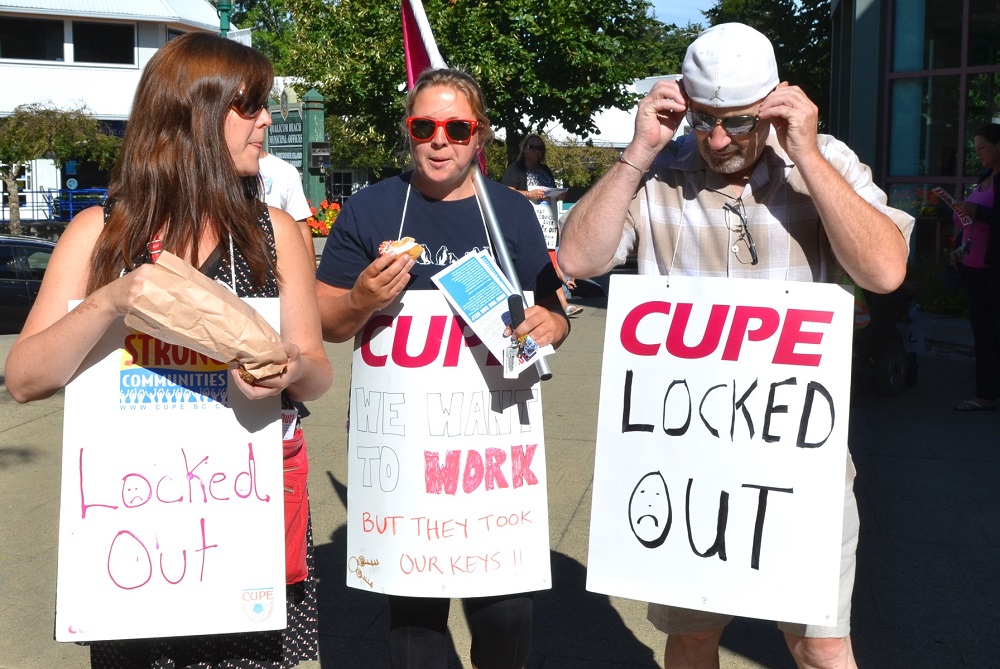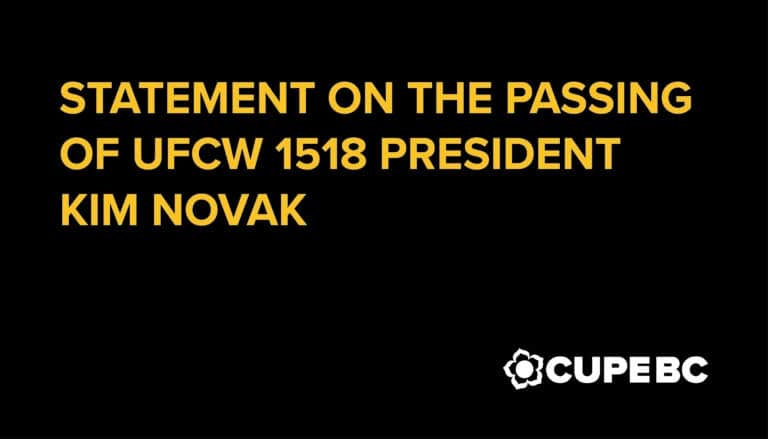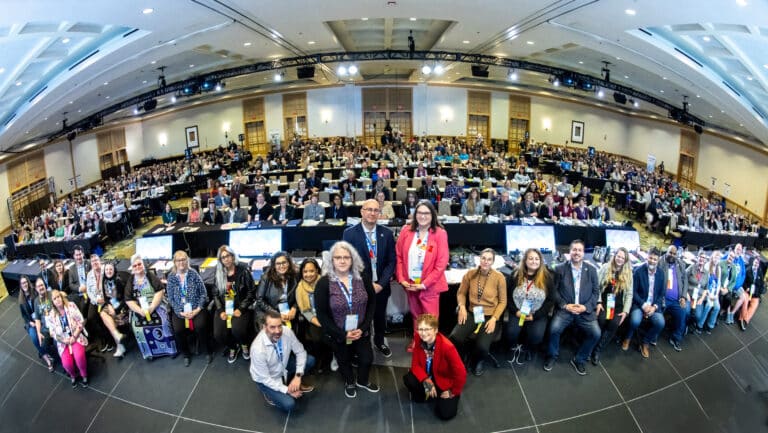For many workers and their families, the character of work continues to change for the worse. As inequality deepens, workers are conditioned to expect less, and more of us live with chronic uncertainty as the ranks of precarious workers swell.
Precarious work is paid employment characterized by:
- Decreased employment security,
- Reduced work continuity,
- Low or inferior levels of pay,
- Reduced worker control over the conditions and pace of work,
- Little or no access to health and welfare benefits, and
- Increased employer pressure for workplace “flexibility” leading to more part-time and term work, and less full-time “regularized” work.
Current research suggests that 25 to 35 per cent of all jobs in Canada share one or more characteristics of precarious work.
Conditions causing precarious work here in Canada include four decades of economic globalization and the push to implement international trade agreements that increase the power of employers. Regular full-time jobs have been lost in manufacturing, services, private industry and elsewhere. Meanwhile, corporations and employers are ramping up their assaults on working conditions, living standards, and unions. Governments are reducing commitments to workers, families and communities while they abandon their role to safeguard workers’ rights.
CUPE National recently released results of a comprehensive membership survey that gives a better understanding of CUPE’s demographics and diversity, as well as the degree to which members face precarious work.
Precarious employment is on the rise
A recent comprehensive CUPE National survey shows that precarious members are concentrated in part-time, casual, on-call, or contract employment. Many equity-seeking groups are overrepresented in precarious or vulnerable classifications including women, young workers, racialized members, non-citizens, and those speaking another language at home, as well as those reporting physical or mental conditions.
Twice as many women are likely to hold part-time permanent or casual jobs. Women are more likely to work less than 30 hours per week with no benefits and have a higher likelihood of having their work hours reduced.
Young workers, or those below 35 years of age, represent 21 per cent of CUPE members. They are likely to work fewer than 30 hours per week and are less likely to have employment benefits, workplace pensions, or sick leave.
Effect of decades-long power shifting and labour market flexibility
Workers who belong to the “precariat” are at the mercy of market forces and the economic power of employers more than they have been for generations. They are working harder, for lower wages in more precarious and insecure jobs with less to fall back on when jobs disappear. Gains of economic growth have gone to corporate profits and the wealth of those at the top.
Increased labour market flexibility has shifted power to employers and reduced legislative standards and workplace protections.
For B.C.’s Education Assistants (EAs) the push to ‘flexibilize’ labour has seen most school districts reducing EA work hours with a new norm of “bell to bell” employment where EAs are paid only for student contact time. Substandard hours and pay result and as a result, many EAs look for supplementary employment. CUPE is fighting back by negotiating Learning Improvement monies to bolster part-time hours.
An ever-increasing number of auxiliary workers inhabit CUPE municipal bargaining units and they often lack stable and predictable work hours, working conditions and income streams. Many members working as Lifeguards face additional requirements to maintain their re-certifications at their own cost – an added burden on already low wages.
And in public libraries, the increasingly precarious nature of work is hurting the quality of services. Increased use of technology and part-timers has reduced the earnings and job security of library workers. A stable, full-time and professional workforce is the best guarantee of quality services for the public.
Universities are overusing contingent academic workers, many of whom belong to CUPE. These folks routinely work years in term positions that can be routinely rolled over (or not), leading to chronic and ongoing employment uncertainty. Casual workers are often unable to accrue seniority, have limited access to benefits, and have little protection from arbitrary dismissal. Some departments now consistently employ casual workers year round. Temporary and part-time work is common among teaching staff, in part because TAs are simultaneously students.
The vast majority of workers in the social services sector are female and there are a high number of part-time and casual employees who don’t receive benefits. Many younger workers or those with part-time hours have to work more than one job to make ends meet and feed their families. In the last round of bargaining the General Services and Community Living sector agreements put an MOA into place to examine the effects of precarious work, part-time and casual employment on employees and the continuity of care.
A charter for economic democracy in the 21st century
The trend and nature of precarious work impacts everyone in civil society. Instead of following the neo-liberal agenda, we need a system that is geared to the public good over private profit. We need to look at new and creative ways to identify with precarious workers and give them true and authentic voice within our union structures. And we need to fight our employers to win the kinds of changes needed to break the cycle of growing precarity in our work and in our communities.
A Precariat Charter: From Denizens to Citizens (Bloomsbury, 2014) by Guy Standing, says we need a new Magna Carta to stop the dissolution of social systems, attack on unions and dismantling of education. A basic income for all citizens is one of Standing’s solutions for emancipating the precariat and strengthening people’s ability to say no to neo-liberalism. “We must have people with a sense of security if we want collective strength,” said Standing.





